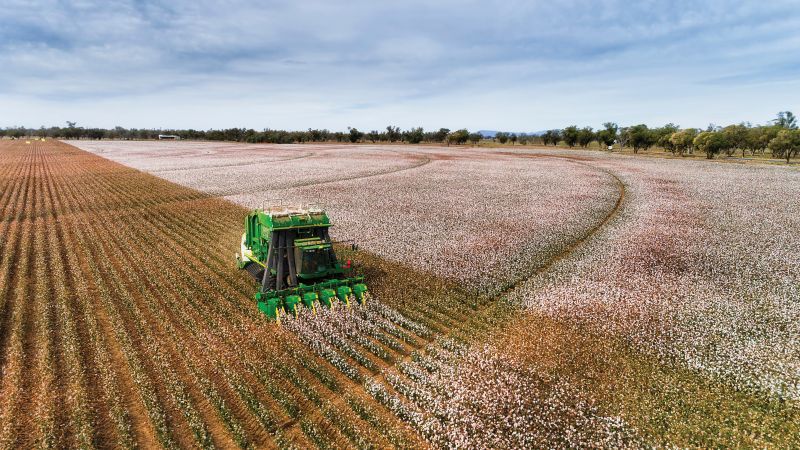Cleveland: New Crop Pricing Deserves Serious Consideration
New crop cotton futures continued its walk on the wild side, closing for the second consecutive week above the dollar mark and settling at 105.19. Good demand associated with unchecked inflation – forecast to continue into 2023 – and buoyed by very dry conditions in the Southwest provide solid price support.
Further, the old crop March contract, rapidly giving way to the May 2022 futures contract as the spot contract, held the old crop uptrend in place. Yet, it is dangerously close to falling below 125 cents, which would indicate the old crop’s first breach of the uptrend and bring the long running bull market into question.
New crop’s solid advance above 105 cents opens its next objective to 112 cents. It is questionable whether demand will support such a rally as mills’ verbal indications are that they are more than very nervous about prices. Yet, mills continue to buy cotton on-call rather than fixing the price. This is the same strategy mills have followed all marketing year, and it has proven to be totally wrong. For the first time, mills are finally suggesting nervousness about higher prices.
This should be taken as an early sign of a slowing demand. However, apparel sales at the retail level continue to grow, and the price trendline continues to point higher.
USDA’s February supply demand report contained few changes. As expected, U.S. exports were reduced 250,000 bales, down to 14.75 million. Sales remain excellent, but U.S. shipping problems continue. Thus, U.S. carryover was increased to 3.5 million bales – still very supportive of current market prices. Yet, Mother Nature will have her say in late spring/early summer.
World production was lowered to 120 million bales, down almost a million from last month, and world consumption was increased 200,000 bales. Including historical data adjustments, world carryover was lowered only 700,000 bales, now estimated at 84.3 million bales.
Two changes were very notable. For the second consecutive month, USDA lowered its forecast of world trade. Additionally, it also made a major adjustment to Indian production. Typically, a reduction in world trade suggests a slowing economy, Yet, this month’s reduction was based on lower U.S. exports.
Lower U.S. exports are an indication of the trucking/container problems in the U.S., nothing more. The Indian crop reduction, down 500,000 bales, should be viewed as bullish as it provided for a reduction in world carryover. India is facing record prices, and domestic Indian mills continue to aggressively bid for supplies. Too, an expansion in Indian plantings will likely be limited by input prices and an increase in food crop plantings.
The On-Call report showed an even more bullish suggestion of price activity than last week’s report. World textile mills continue buying cotton for second/third quarter delivery and electing to fix the price on either the May or July futures contract. On-call sales for both the May and July contracts increased on the week. Fixations on the May contract now total 2,949,500 bales, and fixations on the July contract total 5,339,200 bales.
On-call purchases against both of those contract months are only a combined 900,000 bales. Thus, the ratio of buying to selling futures contracts on those two months is about 7.7 to 1 – an extremely bullish indicator, even more so than in the past few weeks.
Of course, this is the same conclusion we have given week after week, just as prices have increased week after week. Yet, time is rapidly running out for the buying to occur, roughly only four months now.
The trading week was much quieter than recent weeks, an indication that the market took a bit of a break in preparation to ratchet higher in both old crop and new crop months. Stay with trend. Yet, new crop pricing deserves serious consideration. The market has a solid base in the upper 90s for new crop. Yet, despite high production costs, it is offering a rewarding premium to growers. Take some.
As we have said many times: if you like the price enough to plant it, then like the prices enough to price some.
Give a gift of cotton today.








